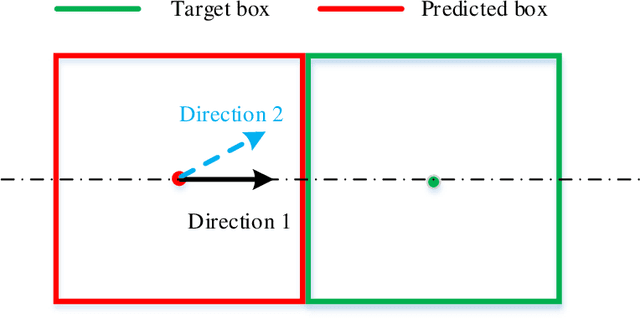Haoran Qin
SolBench: A Dataset and Benchmark for Evaluating Functional Correctness in Solidity Code Completion and Repair
Mar 03, 2025Abstract:Smart contracts are crucial programs on blockchains, and their immutability post-deployment makes functional correctness vital. Despite progress in code completion models, benchmarks for Solidity, the primary smart contract language, are lacking. Existing metrics like BLEU do not adequately assess the functional correctness of generated smart contracts. To fill this gap, we introduce SolBench, a benchmark for evaluating the functional correctness of Solidity smart contracts generated by code completion models. SolBench includes 4,178 functions from 1,155 Ethereum-deployed contracts. Testing advanced models revealed challenges in generating correct code without context, as Solidity functions rely on context-defined variables and interfaces. To address this, we propose a Retrieval-Augmented Code Repair framework. In this framework, an executor verifies functional correctness, and if necessary, an LLM repairs the code using retrieved snippets informed by executor traces. We conduct a comprehensive evaluation of both closed-source and open-source LLMs across various model sizes and series to assess their performance in smart contract completion. The results show that code repair and retrieval techniques effectively enhance the correctness of smart contract completion while reducing computational costs.
Towards TMA-Based Transmissive RIS Transceiver Enabled Downlink Communication Networks: A Consensus-ADMM Approach
Oct 04, 2024Abstract:This paper presents a novel multi-stream downlink communication system that utilizes a transmissive reconfigurable intelligent surface (RIS) transceiver. Specifically, we elaborate the downlink communication scheme using time-modulated array (TMA) technology, which enables high order modulation and multi-stream beamforming. Then, an optimization problem is formulated to maximize the minimum signal-to-interference-plusnoise ratio (SINR) with user fairness, which takes into account the constraint of the maximum available power for each transmissive element. Due to the non-convex nature of the formulated problem,finding optimal solution is challenging. To mitigate the complexity,we propose a linear-complexity beamforming algorithm based on consensus alternating direction method of multipliers (ADMM).Specifically, by introducing a set of auxiliary variables, the problem can be decomposed into multiple sub-problems that are amenable to parallel computation, where the each sub-problem can yield closed-form expressions, bringing a significant reduction in the computational complexity. The overall problem achieves convergence by iteratively addressing these sub-problems in an alternating manner. Finally, the convergence of the proposed algorithm and the impact of various parameter configurations on the system performance are validated through numerical simulations.
Cramer-Rao Bound Minimization for Movable Antenna-Assisted Multiuser Integrated Sensing and Communications
Jul 16, 2024Abstract:This paper investigates a movable antenna (MA)-assisted multiuser integrated sensing and communication (ISAC) system, where the base station (BS) and communication users are all equipped with MA for improving both the sensing and communication performance. We employ the Cramer-Rao bound (CRB) as the performance metric of sensing, thus a joint beamforming design and MAs' position optimizing problem is formulated to minimize the CRB. However the resulting optimization problem is NP-hard and the variables are highly coupled. To tackle this problem, we propose an alternating optimization (AO) framework by adopting semidefinite relaxation (SDR) and successive convex approximation (SCA) technique. Numerical results reveal that the proposed MA-assisted ISAC system achieves lower estimation CRB compared to the fixed-position antenna (FPA) counterpart.
Antenna Positioning and Beamforming Design for Movable-Antenna Enabled Multi-user Downlink Communications
Nov 06, 2023Abstract:This paper investigates a multiple input single output (MISO) downlink communication system in which users are equipped with movable antennas (MAs). First, We adopt a field-response based channel model to characterize the downlink channel with respect to MAs' positions. Then, we aim to minimize the total transmit power by jointly optimizing the MAs' positions and beamforming matrix. To solve the resulting non-convex problem, we employ an alternating optimization (AO) algorithm based on penalty method and successive convex approximation (SCA) to obtain a sub-optimal solution. Numerical results demonstrate that the MA-enabled communication system perform better than conventional fixed position antennas.
Optimized Loss Functions for Object detection and Application on Nighttime Vehicle Detection
Nov 11, 2020



Abstract:Loss functions is a crucial factor than affecting the detection precision in object detection task. In this paper, we optimize both two loss functions for classification and localization simultaneously. Firstly, by multiplying an IoU-based coefficient by the standard cross entropy loss in classification loss function, the correlation between localization and classification is established. Compared to the existing studies, in which the correlation is only applied to improve the localization accuracy for positive samples, this paper utilizes the correlation to obtain the really hard negative samples and aims to decrease the misclassified rate for negative samples. Besides, a novel localization loss named MIoU is proposed by incorporating a Mahalanobis distance between predicted box and target box, which eliminate the gradients inconsistency problem in the DIoU loss, further improving the localization accuracy. Finally, sufficient experiments for nighttime vehicle detection have been done on two datasets. Our results show than when train with the proposed loss functions, the detection performance can be outstandingly improved. The source code and trained models are available at https://github.com/therebellll/NegIoU-PosIoU-Miou.
 Add to Chrome
Add to Chrome Add to Firefox
Add to Firefox Add to Edge
Add to Edge